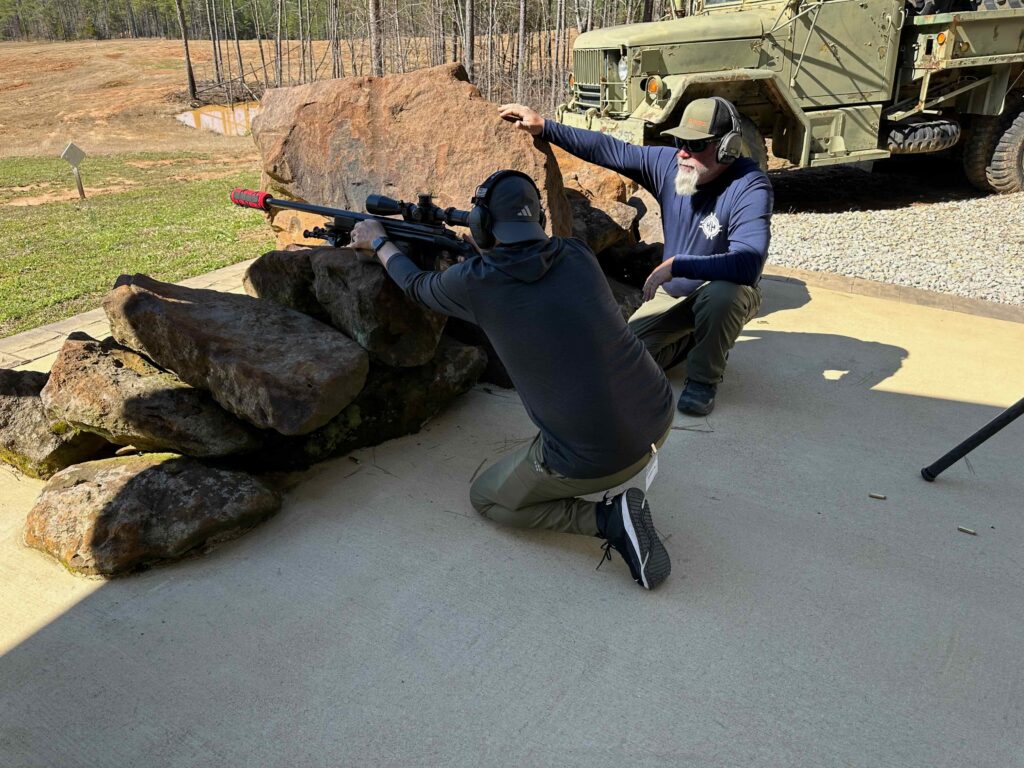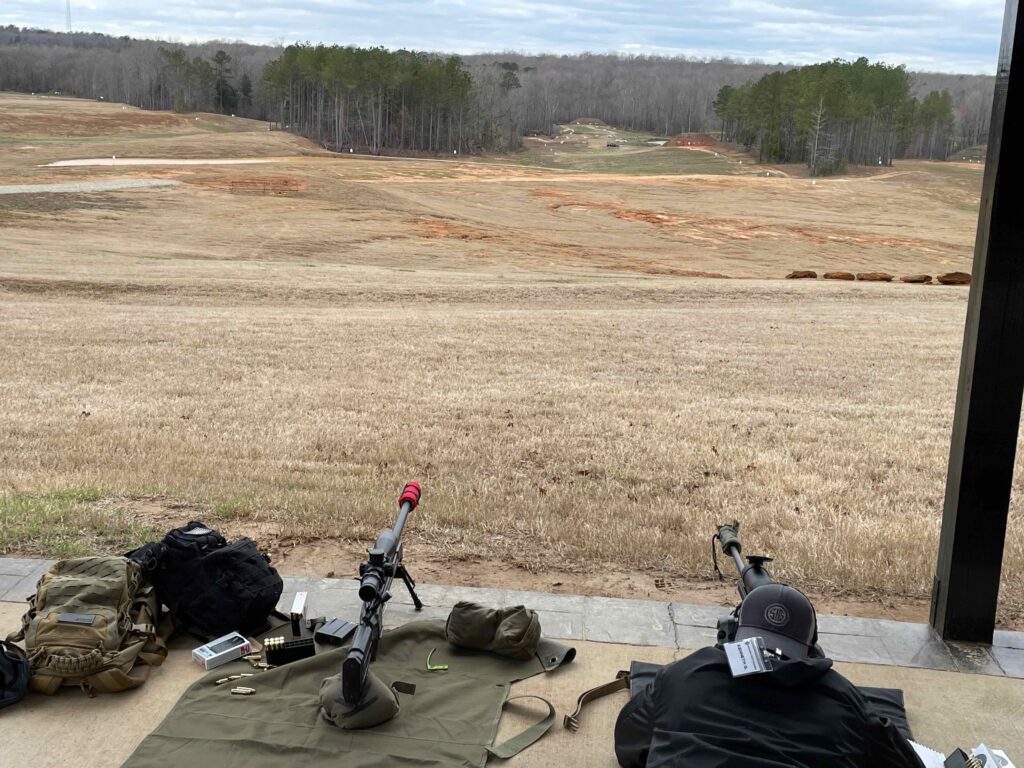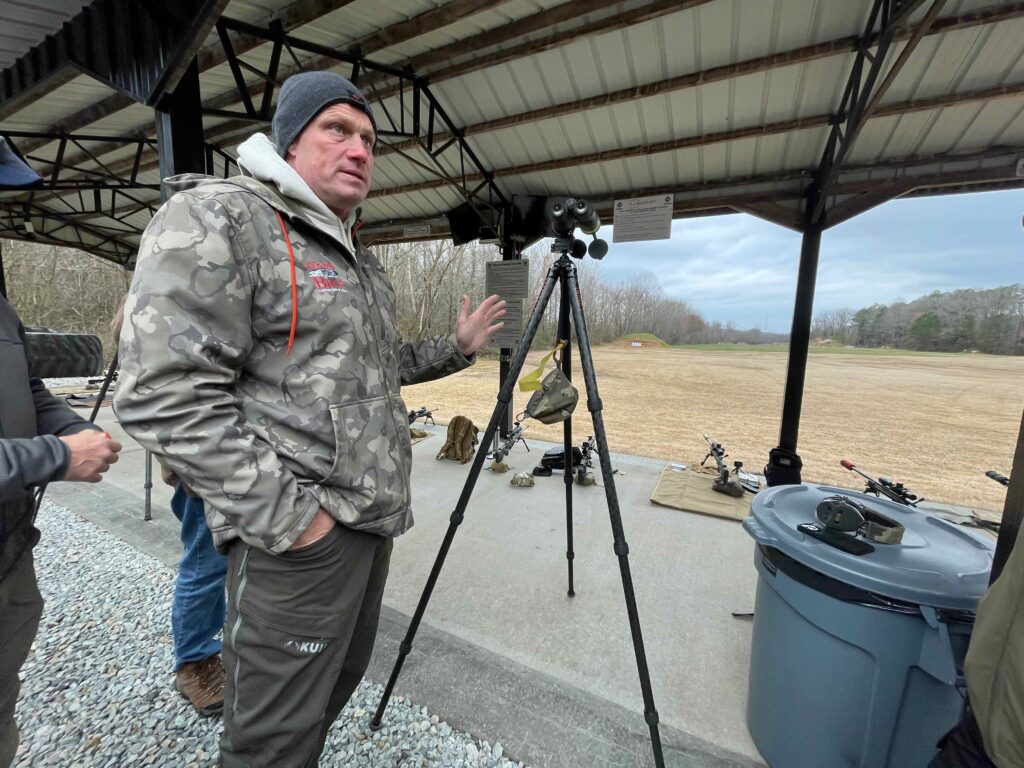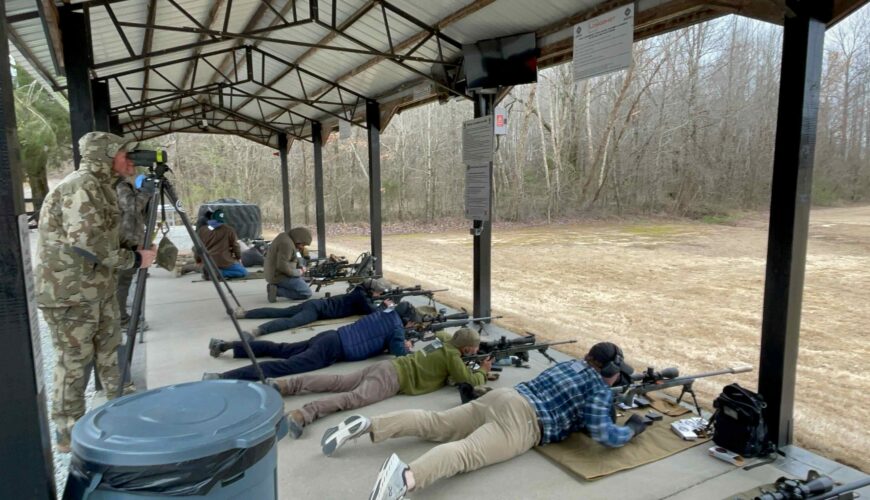Tactics
Sporting Clays Technique: How To Deal With Teal
November 24, 2025 •Mark Chesnut
June 5, 2025
When I first signed up for K&M’s Comprehensive Precision Rifle Course, I wondered how much of the training and PRS style shooting would actually translate to my primary passion: long-range hunting. Four intensive days and over 400 rounds later, I discovered the answer is “practically everything”—with the right perspective and application. The course doesn’t just teach you to hit steel; it fundamentally rewires how you approach any precision shooting discipline, hunting included. The ballistic principles, environmental reading skills, and positional adaptability form a trifecta of knowledge that proves invaluable when you’re miles from civilization with a once-in-a-lifetime trophy in your scope.
The course begins with a thorough evaluation of equipment that proves immediately valuable for hunters. “Your rifle is a system, not just a gun,” explained our lead instructor, a veteran with both military sniper experience and an impressive record of successful western hunts. Unlike some precision courses that focus exclusively on heavy tactical setups, K&M instructors understand the hunter’s dilemma—balancing weight against precision.
I brought my 6.5 Creedmoor crossover hunting and long-range rifle rather than a dedicated match gun, and the instructors spent considerable time helping me understand the benefits and limitations of using this setup during the training. The biggest limitation was the potential of the barrel heating up and losing accuracy during high volume training. I ended up deciding to rent one of their custom GA Precision house rifles to use the right tool for the 4-day course. This kind of personalized attention to the equipment you’ll actually use in various shooting applications is worth its weight in premium brass. The Hornady 147 grain ELD Match ammo that I brought was a perfect fit for the GA Precision rifle.

Simulating conditions encountered outdoors, such as rocks for rests, is critical practice for hunters. Brent Spicer Photo
What makes K&M’s approach particularly valuable for hunters is their emphasis on practical application over theoretical perfection. “In competition, you’re on the clock to get into position and execute the shot,” noted one instructor who splits his time between PRS competitions and hunting. “In hunting, you might only have eight seconds while that bull or buck is in a shooting lane.”
This reality shapes how they teach positional shooting—probably the most directly transferable skill from the course to actual hunting scenarios. We practiced shooting from awkward positions around natural features that mimicked fallen logs, uneven rocks & terrain, and the unpredictable landscape you often encounter in the backcountry. My favorite drill involved moving quickly between stations while managing breathing and heart rate—replicating the physical stress of stalking game in mountainous terrain.
Let’s talk about cold bore shots—arguably the most critical aspect of hunting applications, and an area where K&M’s approach shines brilliantly. Unlike competitive precision shooting where participants often have the luxury of “warming up” their barrels, hunters typically face one-shot scenarios with cold barrels, often in challenging environmental conditions.
The instructors dedicate substantial time to helping students understand their specific rifle’s cold bore tendencies. “Your animal doesn’t care about your group size after three shots,” quipped one instructor. “It only cares about where that first round impacts.” This approach to zeroing and data collection proved invaluable during later field exercises, as it will on future hunts.
Ask any experienced competitor or long-range hunter about their biggest challenge, and most will immediately identify wind reading. K&M’s approach to this critical skill is nothing short of revolutionary for hunting applications. Rather than relying solely on wind meters (which measure conditions at your location, not along the bullet path), instructors teach comprehensive environmental analysis as well as quick assessment tips for changing wind conditions.
“See that tall grass moving at your ten o’clock? That’s showing you a 7-9 mph wind halfway to the target. Now look at the mirage in your scope — it’s indicating a different wind direction closer to the target,” explained our instructor while we prepared for a particularly tricky 800-yard shot. “This will create a tricky wind trajectory you need to account for.”
These nuanced observations translate directly to hunting scenarios, where winds around mountain ridges and through canyons create complex patterns that simple wind meters can’t capture. After just the first two days, I found myself automatically cataloging multiple wind indicators whenever I stepped outside—a habit that will undoubtedly help prevent missed opportunities on future hunts.
One of the most directly applicable segments focuses on engaging moving targets—a common scenario in hunting that receives insufficient attention in most precision rifle courses. The facility’s motorized target systems simulate various animal movements at different speeds, distances and angles.
Instructors break down the complex calculations of lead into practical, field-usable techniques. We learned how to quickly calculate our lead holdovers in our scope reticle and factor in our own personal dwell time. This simplified approach creates immediate, applicable skills that translate directly to field success. Most students were achieving at least 80% hit rates on small moving targets from 300 to over 600 yards, which many students never dreamed was possible before the course.

Testing your abilities on distant targets on a range is the best way to learn how to perform in the field. Brent Spicer Photo
Perhaps the most valuable takeaway for the hunter is what I’d call “ethical distance assessment”—the ability to objectively determine your maximum effective range under varying field conditions. The K&M course systematically pushes you to identify your personal performance envelope across different positions, environmental conditions, and stress levels.
“Competition shooters miss steel plates. Hunters shouldn’t miss or injure animals,” emphasized one instructor during a particularly challenging drill. “Your ethical range isn’t just about your best performance; it’s about your worst-case reliable performance.”
This principle manifests through carefully structured stress drills that force you to account for elevated heart rates, time pressure, and physical exertion—all factors present during actual hunting scenarios. By the end of day four, I had a much clearer understanding of my true capabilities and limitations with my hunting setup. Knowing with certainty that I can consistently place shots within a 6-inch vital zone at 600 yards with my hunting rifle setup under real field conditions provides both confidence and ethical clarity well before the hunt.
The course dedicates significant time to teaching different systems for recording and utilizing ballistic data in field conditions from ballistic applications to data cards. Most PRS shooters meticulously track their ballistic performance across various conditions; K&M teaches hunters how to develop streamlined versions of these systems that remain usable in field conditions. Students learn how to create personalized data cards with verified holdovers for their specific rifle/ammunition combinations out to various distances and stages.
As many hunters have learned the hard way, a ballistic app means nothing if your phone dies at 10,000 feet in ten-degree weather. We practiced creating simplified, durable reference systems that capture essential ballistic information without becoming cumbersome in the field. I’ve since adopted a modified version of this approach for hunting—weatherproof, compact, and requiring no electronics.
The course includes extensive work on what PRS competitors call “stage planning” but hunters recognize as the critical moments after spotting game. K&M instructors break down this process into a systematic approach: range estimation, scope adjustments or holdovers, position selection, wind reading, and shot execution—all compressed into the time constraints typical of competition and hunting scenarios.
Experienced hunters know that you often have 30 seconds or less from when you spot that bedded mule deer until you need to deliver a shot. How you use those seconds determines success or failure. The PRS drills forced us to rapidly analyze complex shooting scenarios, build stable positions quickly using natural terrain, and deliver accurate first-round impacts—often while managing significant breathing and heart rate elevation.
This practical approach stands in stark contrast to typical range practice, where shooters calmly set up ideal positions with unlimited time. By the final day, I found myself instinctively assessing natural features for shooting support and rapidly building stable positions—skills that directly transfer to real hunting situations.
Another benefit of K&M’s program is their detailed attention to recoil management—particularly valuable for hunters using lighter rifles or more powerful cartridges. Unlike some precision disciplines where moderate cartridges dominate, K&M’s instructors understand that hunters often employ harder-recoiling calibers for ethical harvesting.
We spent considerable time refining body positioning, support bag manipulation, and recoil absorption techniques that minimize reticle movement and allow faster follow-up shots—a critical consideration when an animal might require immediate follow-up. I’ve since modified my hunting positions based on these principles, resulting in noticeably improved recovery time with my hunting rifles.
What truly distinguishes K&M’s approach is their emphasis on creating self-sufficient students who can continue developing after the course ends. Rather than simply teaching techniques, they provide a comprehensive framework for ongoing skill development—particularly valuable for hunters who may only fire a few rounds at animals each year but still need to maintain peak performance.
“The difference between a good shooter and a great shooter isn’t just what they do during instruction; it’s what they do afterward,” emphasized the lead instructor during our final debrief. The course concludes with personalized training plans that account for individual shooter’s exposed weaknesses. One of the things I noticed was the emphasis on spending 70% of personal training time focusing on dot drills at 100 yards, which will directly translate to more accuracy at longer ranges. I also realized that I need to spend more time practicing positional shooting on natural barricades and tripods.

An experienced instructor with real-world experience can help your own skills progress rapidly. They are worth the cost of the training. Brent Spicer Photo
What truly sets K&M apart is their instructional cadre that bridges the competition-hunting divide. With a staff including both elite PRS competitors, military snipers and experienced hunters, students benefit from perspectives that span both worlds. This diversity ensures that competition techniques can be appropriately translated to hunting applications rather than blindly applied.
During my course, I received guidance from an instructor who holds multiple PRS podium finishes but also regularly hunts across the country. His ability to explain precisely how competition techniques can be modified for field hunting scenarios was invaluable—particularly regarding the mental aspects of executing difficult shots under pressure.
K&M’s Comprehensive Precision Rifle Course represents the perfect foundation of competition techniques that will translate to hunting applications. By understanding the fundamental principles that govern accurate shooting across all disciplines, hunters can extract enormous value from what might initially appear to be a competition-focused curriculum.
The course provides far more than just improved marksmanship; it delivers a comprehensive approach to precision shooting that will make you a more ethical, confident, and capable long-range hunter. From equipment optimization to environmental reading to mental performance under pressure, every aspect of the training will translate to more successful and ethical harvests. If you can’t commit to four days for the comprehensive course, K&M also offers a two-day Precision Hunter Course. For the serious hunter looking to extend their effective range and overall capability, K&M’s training offers the skills, knowledge, and judgment to make the most of your next hunting adventure. Learn more at kmprecisionrifletraining.com.
